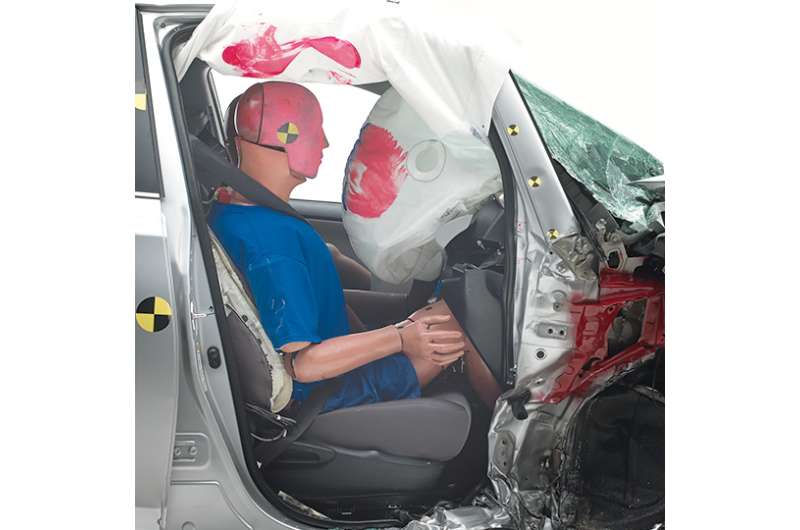June 24, 2016 weblog
Passenger may be protected less than driver, says study

Front-seat passengers should know they may be getting less protection than the driver. A new study has taken a close look at what happens in certain types of crashes.
The Insurance Institute for Highway Safety (IIHS) has posted a video about passenger side protection in cars and has issued a press release as well about their recent findings.
Their investigation focuses on what level of protection a front seat passenger may expect in "small overlap" crashes. They are saying that cars with good driver side protection may leave passengers at risk.
Senior Research Engineer, Becky Mueller, said what happens in a crash to the passenger? The Institute tested SUVs which had earned good ratings in driver-side tests. The testing involved seven small SUVs.
In focus were "small overlap" crashes, but what does that mean?
Mueller commented in the video that small overlap crashes are pretty challenging to vehicle structures.
The IIHS press statement said they are a challenge because they bypass a typical vehicle's main front structure.
The moderate overlap test involves 40 percent of the width of the vehicle, but the small overlap test involves 25 percent.
It is designed to replicate what happens when the front corner of a vehicle collides with another vehicle or an object such as utility pole or tree.
IIHS introduced the small overlap test in 2012, after the success of the moderate overlap front test in spurring automakers to make improvements.
Manufacturers made quick fixes to improvements in the driver side structure rather than delay improvements entirely. In the long term, though, Mueller stated, manufacturers need to make the same improvements to the passenger side too.
"It's not surprising that automakers would focus their initial efforts to improve small overlap protection on the side of the vehicle that we conduct the tests on," said David Zuby, IIHS executive vice president and chief research officer. "In fact, we encouraged them to do that in the short term if it meant they could quickly make driver-side improvements to more vehicles. As time goes by, though, we would hope they ensure similar levels of protection on both sides."
The 2016 Hyundai Tucson performed at a level corresponding to a good rating. The structure held up well, it was reported, allowing the airbag and safety belt to do their jobs effectively. A passenger riding in this car would get the same level of protection in a small overlap crash on the right side as the driver would in a crash involving the left side. "The Institute conducted 40 mph passenger-side small overlap tests on seven small SUVs with good driver-side small overlap ratings. Only one of the vehicles, the 2016 Hyundai Tucson, performed at a level corresponding to a good rating, and the others ran the gamut from poor to acceptable."
The results have prompted IIHS to consider instituting a passenger-side rating as part of its TOP SAFETY PICK criteria," said the IIHS. Small overlap ratings would be of benefit, and the institute said it could start such a program next year and even make it a requirement for one of its safety awards "as early as 2018."
Mueller, an IIHS senior research engineer and the lead author of the study, said, "More than 1,600 right-front passengers died in frontal crashes in 2014."
"We've incorporated enhancements on both the driver's and passenger's side for vehicles built on Toyota's new TNGA platforms, beginning with the 2016 Prius," said a spokesperson, according to Cars.com.
The Insurance Institute for Highway Safety (IIHS) is an independent, nonprofit scientific and educational organization dedicated to reducing the losses—deaths, injuries and property damage—from crashes on the nation's roads.
© 2016 Tech Xplore
















